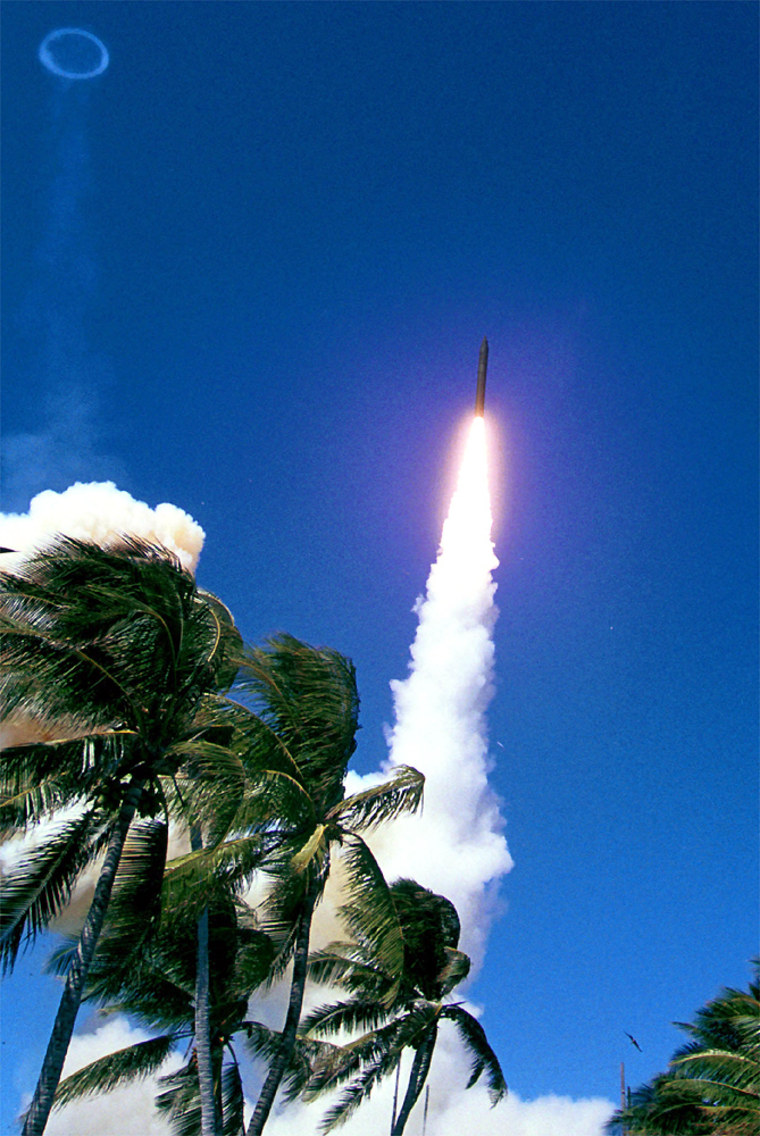The chief of the military’s missile defense programs said Tuesday he expects to be able to protect all of the United States from a North Korean attack by the end of 2004, but said failures in two upcoming tests could mean “big problems” for the controversial program.
Air Force Lt. Gen. Ron Kadish, director of the Missile Defense Agency, told reporters that a decision when to put the first missile interceptors on alert has not been made, but that plans call for several to be ready to fire by September.
By the end of the year, close to 10 interceptors are expected to be on alert at two sites: Fort Greely, Alaska, and Vandenberg Air Force Base, Calif. They will be linked to a specialized radar able to track inbound missiles over the Pacific Ocean.
First test within weeks
But the interceptors face two upcoming tests of their ability to find and destroy incoming ballistic missiles, the first expected in late spring or early summer.
“If they both fail, we’ve got big problems,” Kadish said. “We expect them to be successful.”
He stopped short of saying two failures would delay deployment of the first interceptor missiles in Alaska. Officials note those first interceptors will serve a dual role: as subjects of further testing, as well as actual defenses in an emergency.
The Bush administration has made the deployment of missile defenses a key aspect of its national security policy, saying it is vital to defend the nation against missiles launched by hostile nations.
Critics charge the technology is neither ready nor affordable, and say it fails to address the greater threat of weapons of mass destruction brought into the country by terrorists or other means.
Citing MDA figures, a recent report from the congressional General Accounting Office said that missile defense programs will cost $53 billion between 2004 and 2009.
Growing threat seen
Despite the apparent elimination of Iraq and Libya as future long-range missile threats, Kadish said the danger from ballistic missiles is growing. He pointed to North Korea and Iran’s missile programs as the most worrisome, although he declined to describe any recent intelligence on developments in either country.
North Korea, which intelligence officials believe has an untested intercontinental ballistic missile, is regarded as the most immediate threat, which is why the initial system of radars and interceptors are geared toward strikes from across the Pacific.
“Any adversary that would want to go against this system would have to think more than twice,” Kadish said.
In the longer term, Iran could develop missiles capable of reaching the United States. A radar in Great Britain, once it is upgraded in 2005, will allow Alaskan-based interceptors to target missiles launched from the Mideast toward North America, Kadish said.
Kadish said the United States and its European allies are considering a third interceptor base in Europe to protect European countries from those missiles.
Kadish’s agency oversees a number of other anti-missile programs and is working with allies to develop missile defenses in other countries.
He acknowledged delays in the Airborne Laser, a program that aims to mount a laser cannon on a Boeing 747, which would shoot down missiles as they were launched. So far, engineers have not been able to fire the main laser, which has not yet been put onto the test aircraft. Nor have the targeting optics on the plane undergone full trials, he said.
